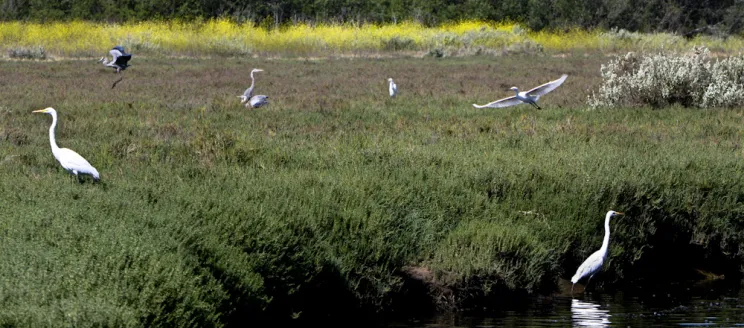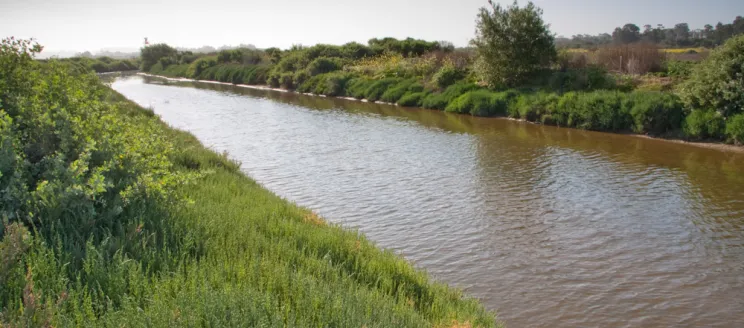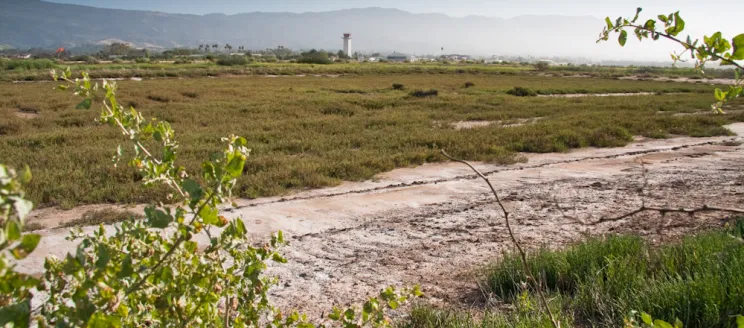17112
11336
Image

Title
Goleta Slough Management
Sections
All SBPL locations will be closed from 12/22-12/26 and on 1/1/26 for the winter holidays. For all the details about adjusted hours and closures, visit our Winter Holiday Hours page.

Jan 16, 2025 09:30 AM
Mar 20, 2025 09:30 AM
May 15, 2025 09:30 AM
Jul 17, 2025 09:30 AM
Sept 18, 2025 09:30 AM
Nov 20, 2025 09:30 AM
Jessica Metzger, AICP
Administrative Analyst III
(805) 692-6032
jmetzger@SantaBarbaraCA.gov
Approximately one-half of the Airport property - about 430 acres - is comprised of the Goleta Slough State Marine Park. As proud stewards of the Slough, Santa Barbara Airport is actively managing 55-acres of the park that is currently undergoing planting, maintenance, and monitoring as part of this restoration effort. This coastal wetland is recognized as one of the few remaining saltmarsh habitats in California.
Santa Barbara Airport funds the Goleta Slough Management Committee (GSMC), and works in cooperation with the County of Santa Barbara, the University of California, Santa Barbara, and environmental agencies for further research and resilience strategies. The Goleta Slough is surrounded by various communities, including culturally significant lands and the Airport. With sea level rise approaching, efforts from multiple municipalities and the public are necessary. This project proposes multiple meetings with agencies and the public to set resilience and sustainability goals and achieve them with long term collaboration.
"Goleta Slough is a coastal wetland located along the central coast of California, a region with high biodiversity in which many species reach their northern and southern limits. Like many tidal wetlands along the Pacific Coast, the Slough has been greatly reduced in size and function over the past two centuries through a combination of natural processes and manmade land uses. The Goleta Slough Area Sea Level Rise and Management Plan comprises an update of previous Slough management plans and includes new detailed information and analysis of future conditions projected to occur as climate changes over the next century." - Goleta Slough Area Sea Level Rise and Management Plan, 2015

Egrets and Herons enjoy springtime in the slough.

Taken in 2008, the slough is at a high water level after rainfall.

Taken in 2008, this depicts the slough during dry season. Unfortunately, the dry seasons have become longer and more frequent.
500 James Fowler Road
Santa Barbara, CA 93117
